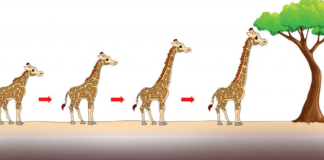INVESTMENT PERSPECTIVES
By J Mulraj
Feb 25 – Mar 3, 2023
America’s Coming Woes
After WWII the US, as the economically strong power (European economies were devastated by the war), obtained enormous privileges, including having its currency nominated as the world’s global currency. All other currencies were pegged to it, and the USD was pegged to gold, exchangeable at a fixed $ 35/ounce. In 1955, the US launched into a war with Vietnam, meant to stanch the spread of communism. It lasted 20 years, and was so costly that, in 1971, US President Richard Nixon unilaterally withdrew the US pledge to exchange the USD into gold at the fixed rate of $ 35/ounce. He feared that other countries would rush in with their holding of USD and ask for gold.
In 1973, OPEC, led by Saudi Arabia, imposed an oil embargo on countries which had helped Israel during the Yom Kippur war. Prices of gas (petrol) shot up, and there were long lines at petrol pumps. Henry Kissinger negotiated a deal, under which the embargo ended, Saudi agreed to sell, and price, its crude oil in USD, in return for US military protection, through purchase of modern weaponry. Other oil producers also started selling their crude in USD, which led to the birth of the petrodollar. The petrodollar is a stock of USD held by other countries, outside US borders. As this stock doesn’t enter USA, it does not contribute to US inflation.
So, the privilege of being the world’s universally accepted currency, combined with the need for other countries to buy the USD in order to purchase oil from OPEC, meant that the greenback was in continuous demand. This allowed USA the luxury of living beyond its means, running up huge trade deficits by importing much more than it exported. Normally such trade deficits would lead to inflation, but, as the petrodollars were kept outside its borders, USA could enjoy low inflation. Since the 70s the US has continually had negative trade balances.
In September 2001 the twin towers of the World Trade Centre in New York got attacked by kamikaze plane crashes using commercial airliners, causing huge casualties. US President retaliated by starting the Afghan war in 2001, (it lasted 20 years), then the Iraq war, in 2003 (it lasted 8), both of which drained the US economy. The 2008 global financial crisis, and then the Covid epidemic, drained it further.
All this resulted in a huge amount of money printing, which was unrestrained, since there was no need to convert to gold. So we have now reached a situation where the chickens are coming home to roost. Excess money printing has led to high inflation, and high interest rates to tame it.
America has cut its nose to spite its face. It is in danger of losing its twin privileges, of being the universally accepted global currency, and of oil being sold in USD, creating the petrodollar demand.
Other countries are trying to create an alternative to the USD, including talks of a BRICS currency.
Oil producers like Saudi, Russia and others, are willing to sell crude oil in currencies other than the USD. True, this is easier said than done, because to find an acceptable and trusted alternative will be a long haul. But if the US loses its status as a global currency, or if many more countries start selling crude oil in other currencies, it poses several threats.
But before looking at the threats, see how spending on wars has diverted America from the need to spend on infrastructure, and on pursuit of new technologies. Its roads, rail, ports, airports, telecom and energy infrastructure needs huge investments. Witness the derailment of a freight train carrying chemicals, that has devastated a town in Ohio.
A year long study by the Australian Strategic Policy Institute found that China led America in 37 out of 44 technologies studied. China leads, eg, in 5G/6G telecom, in hypersonic, in electric batteries and others. USA led in only 7, such as vaccines, quantum computing and space launch vehicles.
Joe Biden has got several spending bills passed by Congress, to catch up. But it trails China in the technology race, in many of them.
The US has not hit its head against the debt ceiling approved by Congress. Congressional approval is needed to raise the ceiling, as a failure to do so would result in a default. The Republican controlled Congress is seeking talks with the Government to chalk out a path of cutting expenditure. The White House is willing to discuss but will not agree to conditions.
So there is a risk of a default, which would trigger a crisis, would result in a downgrade of USA’s AA+ rating by S&P, and raise interest costs as bond prices drop and yields go up. That would compel the US Fed to hike rates further. Which, in turn, can make several pension/endowment funds unable to keep their commitments. And, when interest rates rise, equity markets fall.
That scenario could be worse than 2008.
According to the March 2, ET Markets Morning, newsletter, US traders are betting that the US Fed will raise interest rates by another 1%, by September, from the current rate of 4.5-4.75%. Any hopes that the Fed would pivot, and lower rates, are dashed.
If China were to fully open its economy, the ensuing demand from it would make commodity and crude oil prices rise sharply, and, with it, inflation.
There appears no end in sight to the senseless Ukraine war. No one is talking about a peaceful end to the conflict.
Perhaps a ceasefire may come from another reason – a shortage of artillery shells! Ukraine obtains these from other countries, chiefly America! Which produces them at the Scranton Army Ammunition Plant. This plant produces 11,000 shells a month. Ukraine sometimes uses 11,000 shells in a day!!
So the end of the war, avoided by ego, may be achieved by necessity.
And not a day too soon.
Last week the BSE Sensex rose 345 points to close at 59808.
India’s GDP growth slipped to 4.4% in Q3, below consensus estimates of 4.7-4.9%. The UN has forecast world GDP to grow by 1.9% this year, but says India would be a bright spot, with an expected 5.8% GDP growth, expected to rise to 6.7% next year. There are apprehensions that El Niño could cause a heat wave and impact food production. GST collections in Feb were up 12.4%, to just under Rs 1,50,000 crores.
In this must see video Nandan Nilekeni, Co-founder of Infosys, and the person who helped develop Aadhar, lays out a bullish case for India. The India stack, comprising Aadhar, UPI and other layers, is allowing the entire population to participate in India’s growth story and get access to bank credit. UPI allows even small transactions to be done instantly, at zero cost, and in an inter operable manner using any payment or processing platform.
Stock markets may continue to stagnate, thanks to rising interest rate curve to fight inflation, and thanks to the continuation of a senseless war, but the India story is looking good for a long term.
Picture source: https://twitter.com/SonyKapoor/status/1023092519431798784
Comments may be sent to jmulraj@asiaconverge.com










































COMMENTS